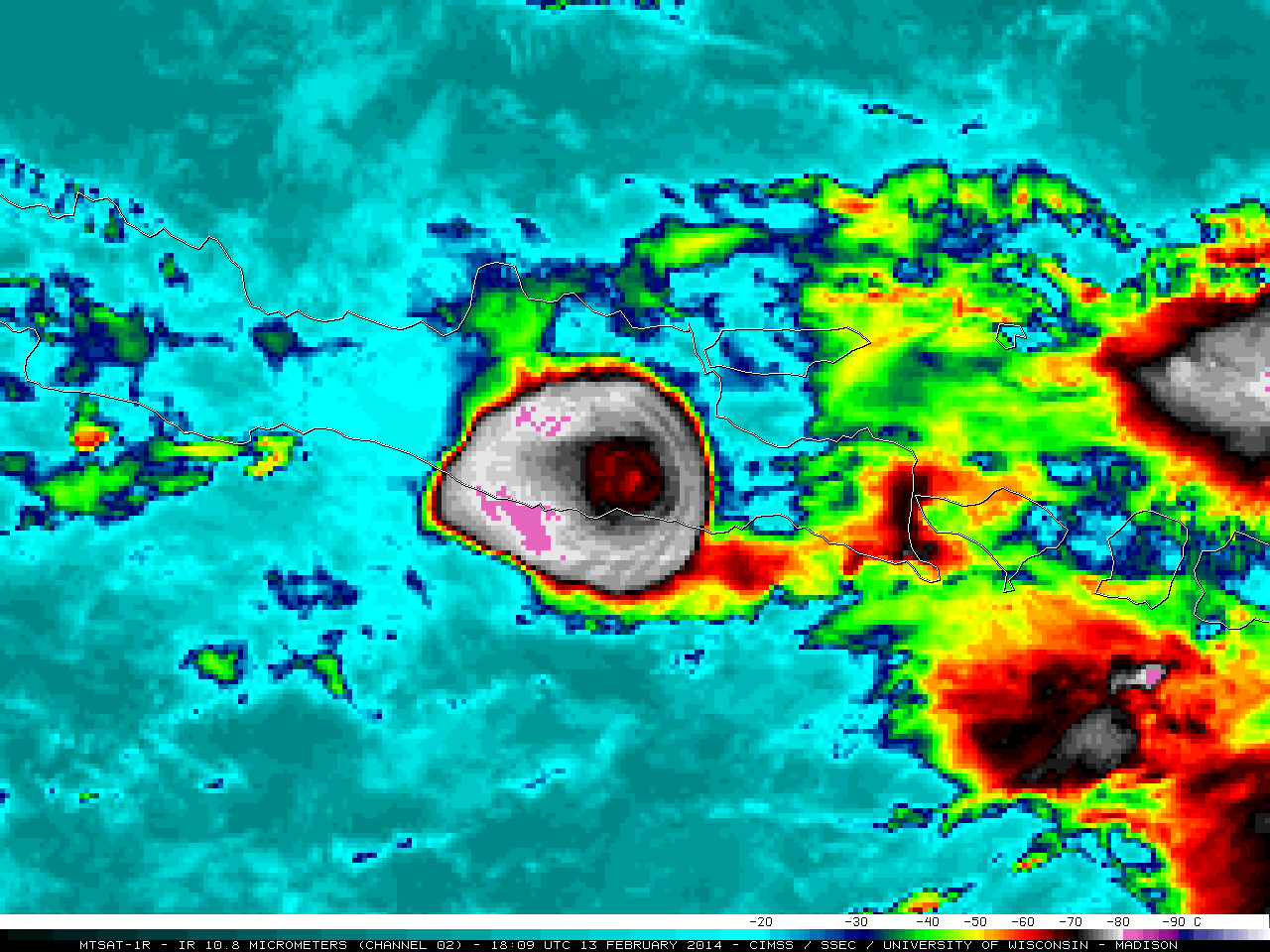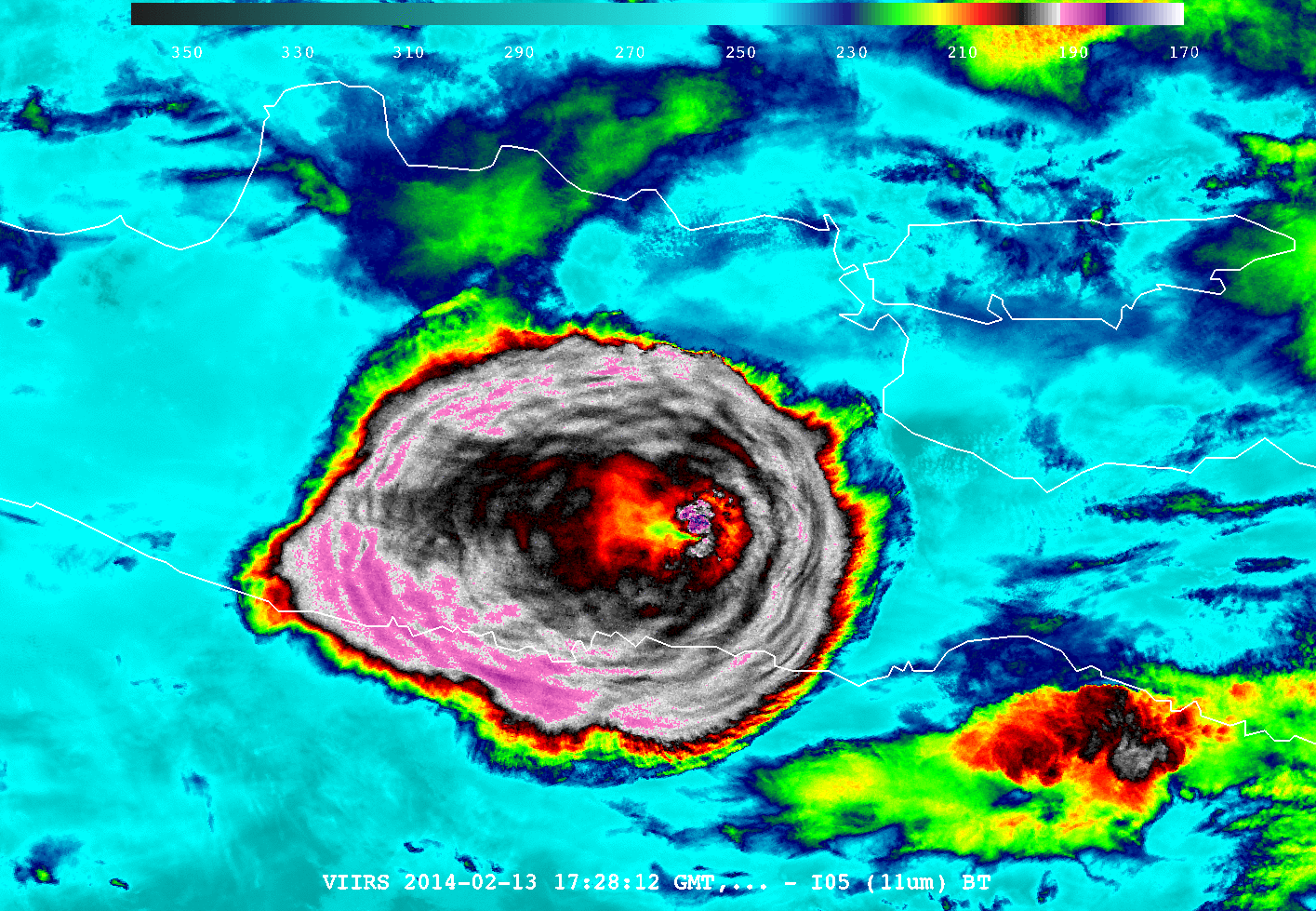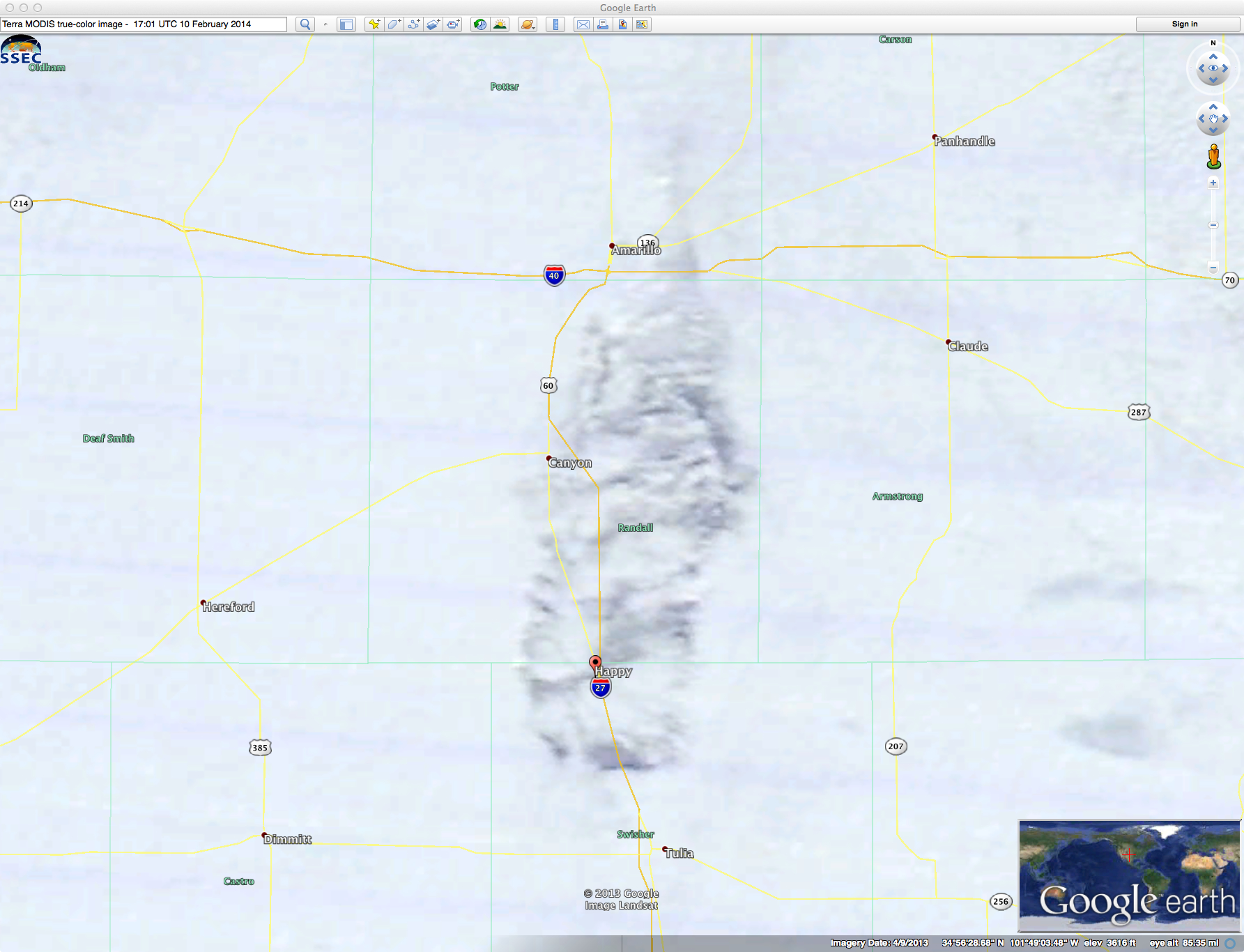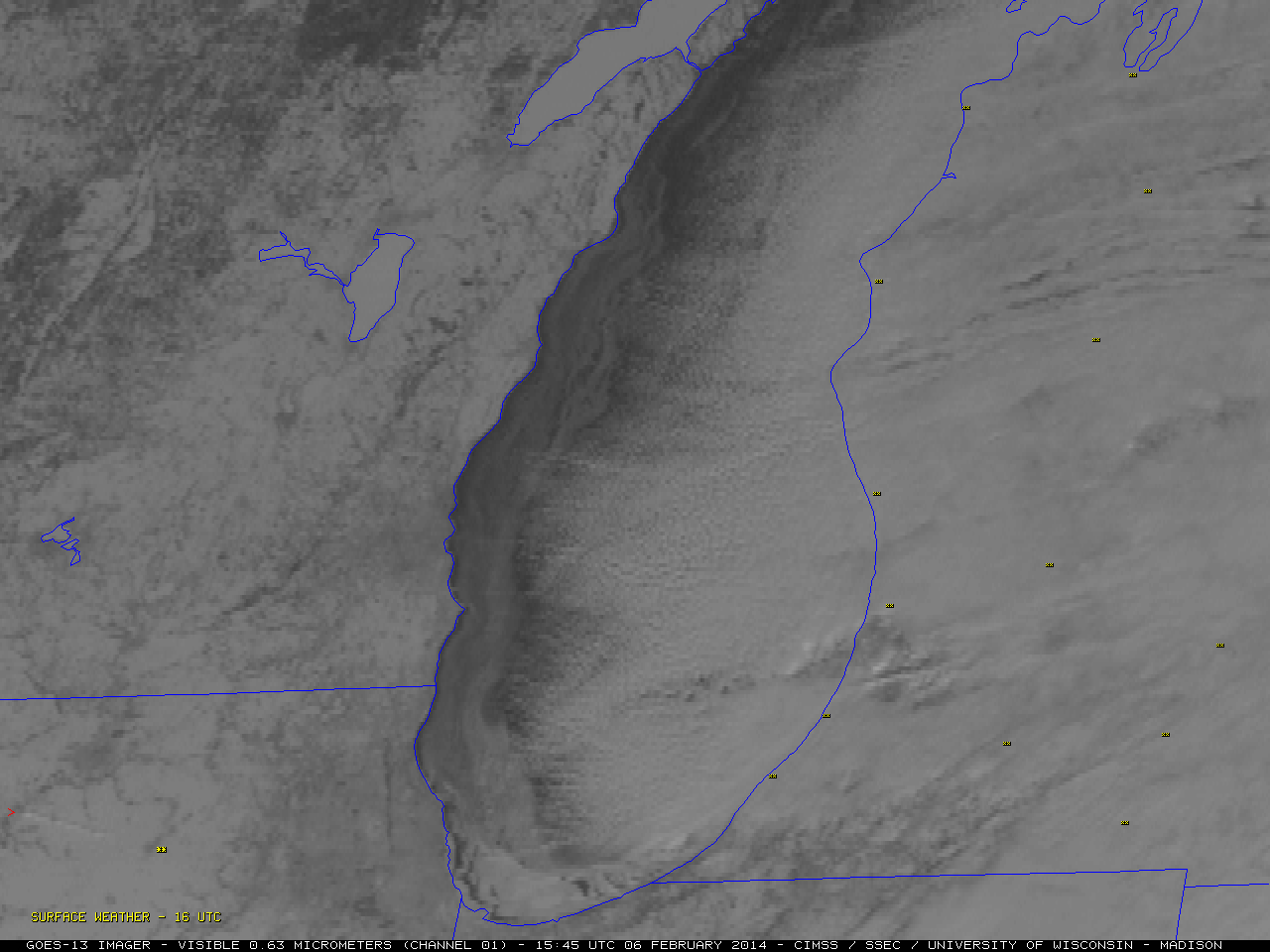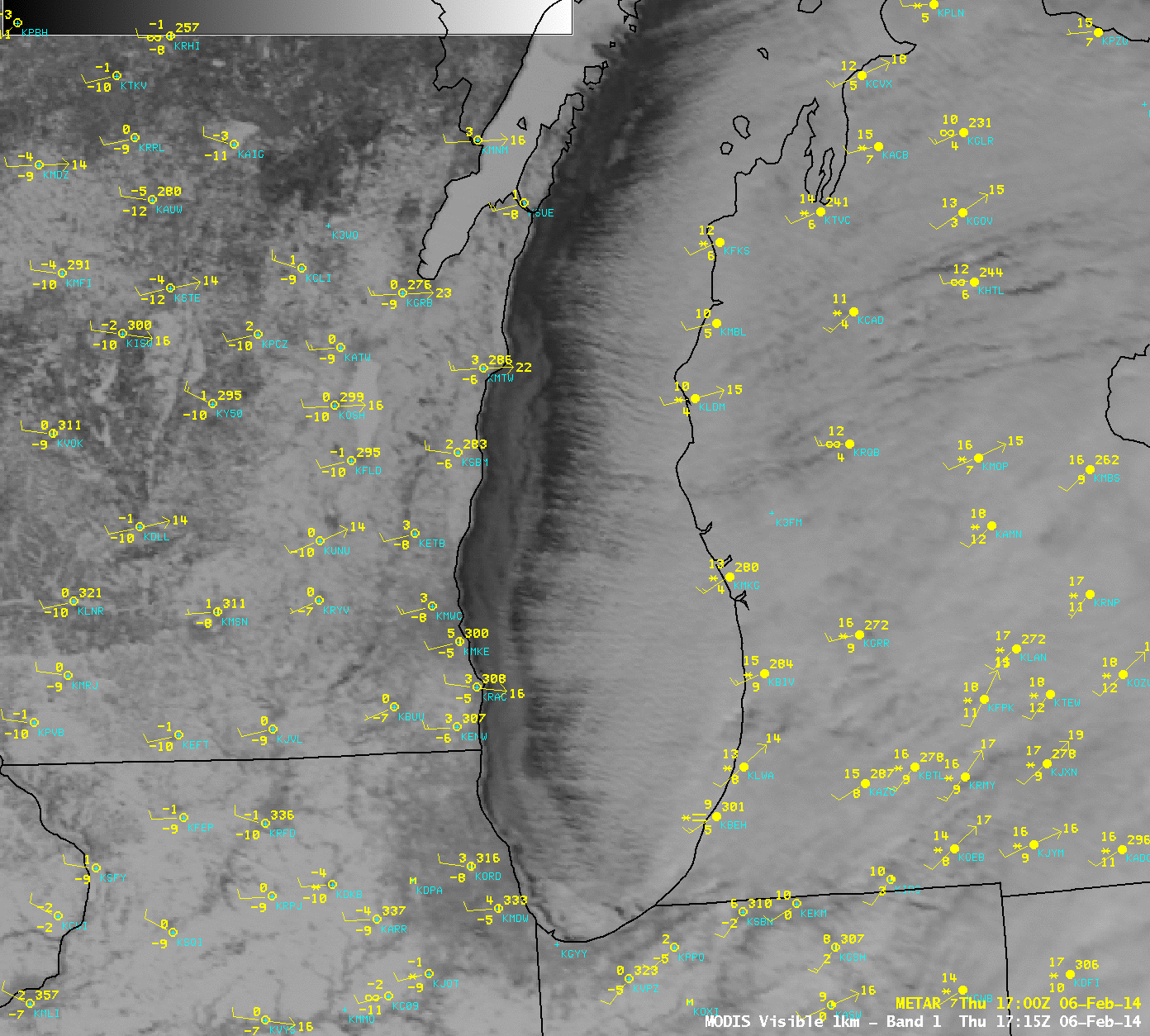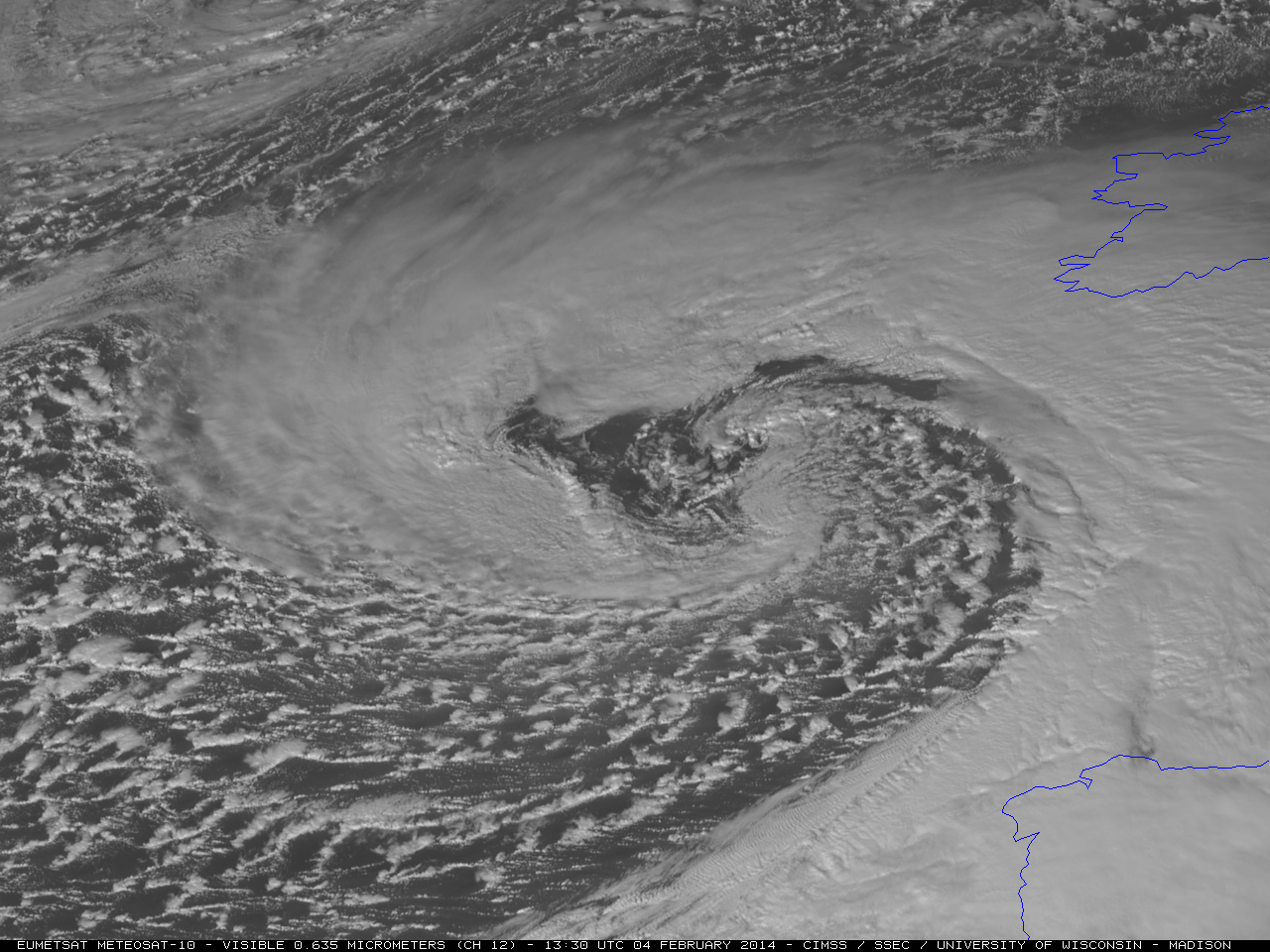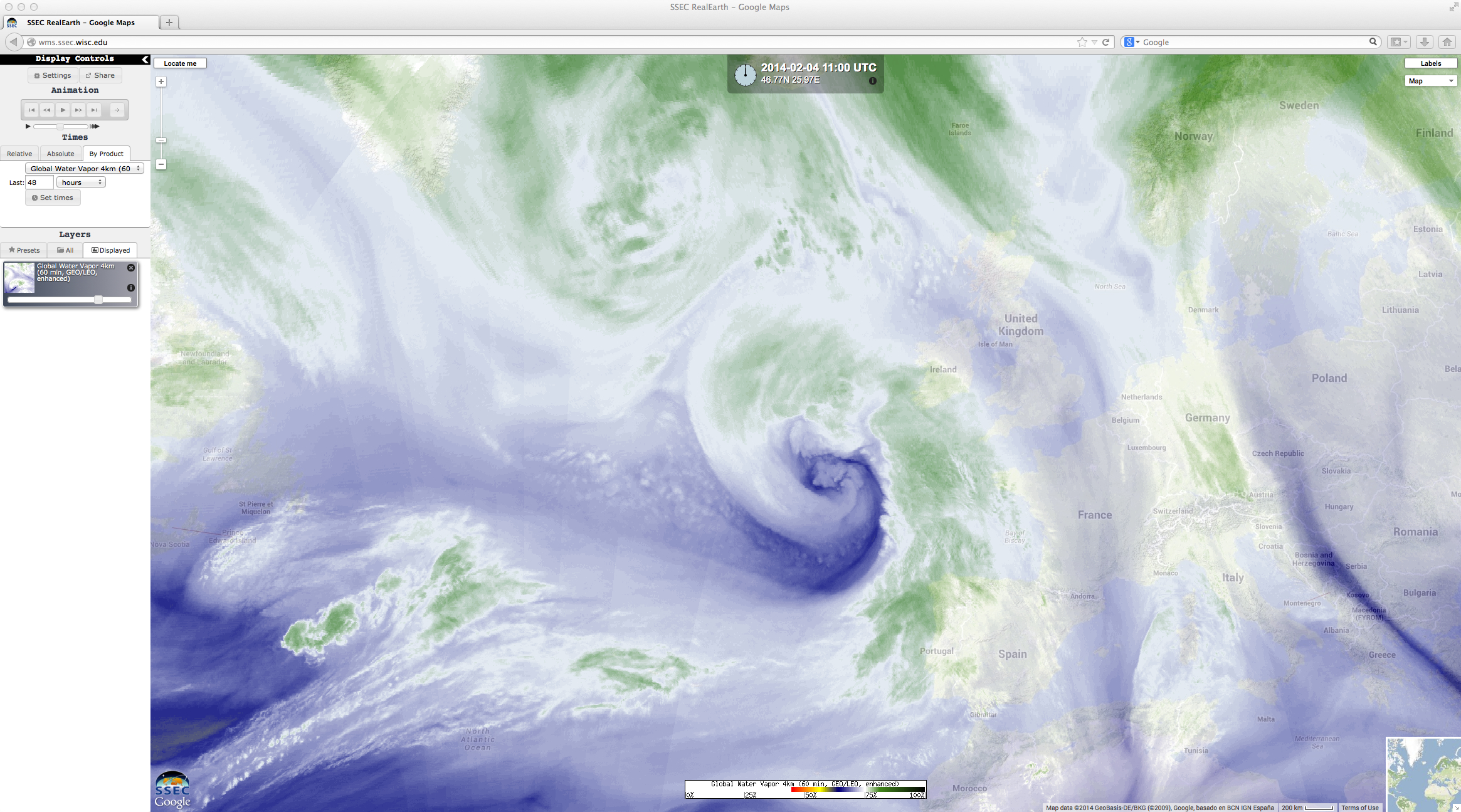McIDAS-X images of MTSAT-1R 10.8 µm IR channel data (above; click image to play animation; also available as an MP4 animation) showed the rapid expansion of the volcanic umbrella cloud resulting from the eruption of Kelut (aka Kelud) on the Indonesian island of Java on 13 February 2014. The MTSAT-1R satellite was in rapid scan mode, providing images at 10-minute intervals (with some gaps). The initial signal of a volcanic cloud appeared as a small cluster of cold pixels on the 16:09 UTC (11:09 PM local time) IR image.
The dramatic signature of a distinct circular-shaped warm core (shades of red, around -60º C) surrounded by a ring of colder (shades of white, -75º to -80º C) cloud-top IR brightness temperatures possibly indicated that a portion of the cloud plume associated with the explosive eruption rose well into the lower stratosphere, and was therefore radiating at the warmer temperatures that existed far above the tropopause. The leading edge of the top of the cloud plume eventually exhibited IR brightness temperatures colder than -80º C (shades of violet) as it drifted toward the west-southwest, with a minimum of -84.5º C on the 19:29 UTC image. Along the upwind (eastern) portion of the volcanic cloud, a signature of “bow shock waves” was evident: an indication that the massive and dense volcanic cloud was acting as a barrier to the ambient easterly flow across the region. Volcanic lightning was also generated by the rising ash plume (see photos on the Wired Science “Eruptions” blog posts 1 and 2).
A more detailed view was provided by McIDAS-V images of Suomi NPP VIIRS 375-meter resolution 11.45 µm IR channel and 750-meter resolution 0.7 µm Day/Night Band data (above; images courtesy of William Straka, CIMSS). A ring of gravity waves could be seen around the periphery of the volcanic cloud shield; the coldest IR brightness temperature within the small cluster of “overshooting tops” was 175 K or -98º C (closer view). Since the Moon was in the Waxing Gibbous phase at 98% of full, it provided ample illumination for a “visible image at night” using the VIIRS Day/Night Band — note how the ash-laden volcanic cloud exhibited a darker gray appearance compared to the surrounding brighter white meteorological clouds.
A plot of the 13 February/12:00 UTC rawinsonde data from the nearby (map/IR image comparison) Surabaya/Juanda International Airport (above) showed that a very moist and marginally unstable (Lifted Index of only -1.7) atmosphere existed over the region about 4 hours prior to the eruption — the tropopause was located at 105 millibars (mb), at an altitude of 16.29 km where the air temperature was -84.5º C. According to the volcanic ash advisory issued by the Darwin VAAC at 00:43 UTC on 14 February, the top of the volcanic ash extended to 55,000 feet or 16.76 km — somewhere between 100 mb and 87.1 mb on the Surabaya sounding. The warmest temperature recorded in the stratosphere by the sonde instrument was -71.3º C at 64.9 mb or 19.02 km.
A GOES-R Volcanic Ash Height product (VISITview lesson | PowerPoint) — derived using MTSAT-2 data — indicated that downwind portions of the ash cloud reached the 18-20 km ASL range (black color enhancement), with a maximum ash height value of 22 km (below; click image to play animation). CALIOP data from a CALIPSO overpass of the Kelut volcanic cloud just around 18:13 UTC on 13 February showed that the top of the volcanic cloud was generally at an altitude of 18-19 km, with some cloud/ash material reaching a maximum height of 26 km; taking that data source into consideration, a subsequent volcanic ash advisory issued by the Darwin VAAC at 17:09 UTC on 14 February revised the maximum ash height to 65,000 feet or 19.8 km.
With the arrival of early morning daylight, MTSAT-1R 0.68 µm visible channel images (below) showed the dense volcanic ash plume drifting west-southwestward; there was also a subtle signature of the “bow shock waves” seen along the eastern edge of the ash plume, similar to what was observed on the IR imagery.
Back to the topic of the 26 km height seen on the CALIPSO data: on the 10-minute interval MTSAT-1R 10.8 µm IR imagery, the warmest cloud-top IR brightness temperature within the “circular warm spot” of the volcanic cloud was -56ºC at 17:19 UTC. The 13 February/12 UTC Surabaya/Juanda rawinsonde only made it up to 64.9 mb or 19.02 km (where it was -71.3ºC) — however, the 14 February/00 UTC rawinsonde ascended all the way to 10 mb (below). So using this later sounding, the air temperature of -56ºC corresponded to an height somewhere between 24.9 mb (24.8 km) and 20 mb (26.2 km) — which roughly agrees with the 26 km height seen on the CALIOP data.
Additional satellite products showing details of the Kelut volcanic eruption can be found on Nicarnica Aviation blog posts (1 | 2).
View only this post Read Less


